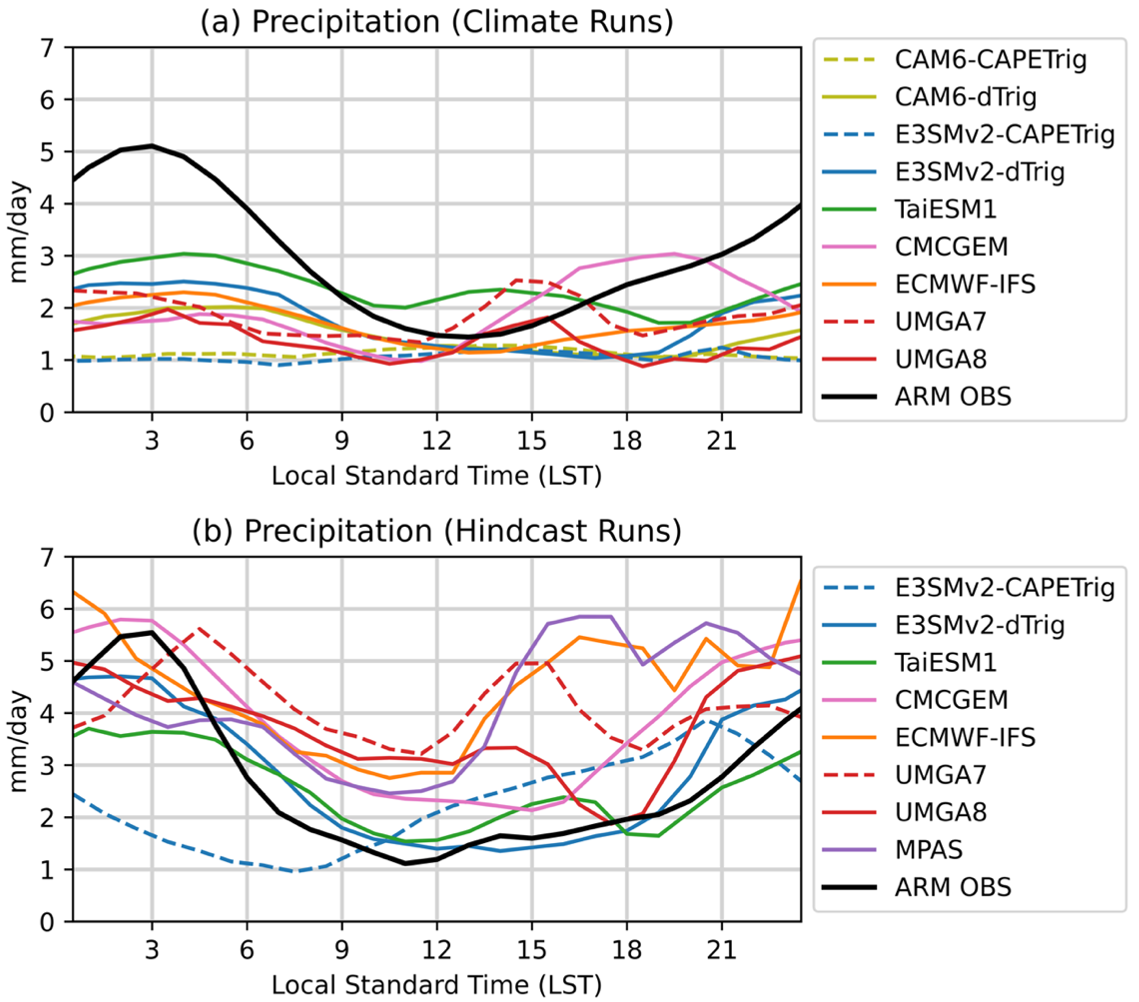Diurnal cycle of precipitation over the tropics and central U.S.
Submitter
Xie, Shaocheng — Lawrence Livermore National Laboratory
Tao, Cheng — Lawrence Livermore National Laboratory
Area of Research
General Circulation and Single Column Models/Parameterizations
Journal Reference
Tao C, S Xie, H Ma, P Bechtold, Z Cui, P Vaillancourt, K Van Weverberg, Y Wang, M Wong, J Yang, G Zhang, I Choi, S Tang, J Wei, W Wu, M Zhang, J Neelin, and X Zeng. 2024. "Diurnal cycle of precipitation over the tropics and central United States: intercomparison of general circulation models." Quarterly Journal of the Royal Meteorological Society, 150(759), 10.1002/qj.4629.
Science

Figure 1. The composite mean diurnal cycle of precipitation (mm/day) for (a) climate runs (June-August, 2011-2018) and (b) hindcast runs (June 01-July 15, 2015). Results from the 5-day hindcasts are averaged over Day 2 to Day 5 hindcast lead time. Domain-mean precipitation from merged radar-gauge products that is available from the ARM continuous forcing data set and the VARANAL value-added product for the Plains Elevated Convection at Night (PECAN) field campaign are used in (a) and (b), respectively. From journal.
U.S. Department of Energy scientists and collaborators at Lawrence Livermore National Laboratory evaluated the performance of a number of general circulation models (GCMs) in simulating the diurnal cycle of precipitation (DCP) in both climate (atmosphere-only) mode and short-term (5-day) weather hindcast mode. Particularly, this study emphasized the central U.S. and central Amazon where long-term Atmospheric Radiation Measurement user facility observations and enhanced field campaign operations are available.
Impact
Most models had problems capturing the observed DCP, which is a persistent and well-known problem in GCMs. By applying an hierarchical modeling framework that includes both climate simulation and short-term weather hindcasts, this study provided additional insights into model errors including model physics, basic-state biases, missing convective-environmental interactions, the impact of model resolution, etc.
Summary
Models with a revised convection trigger that allows air parcels to be lifted above the boundary layer exhibit much better simulation of nocturnal rainfall that is often associated with the propagation of mesoscale systems, consistent with previous studies. The model bias of “too weak” rainfall intensity of DCP in climate simulations is improved in weather hindcasts over the central U.S. This study also shows that including convective memory in cumulus parameterizations reduces the model bias of too frequent light-to-moderate rain decreases but also weakens the diurnal variability.
Keep up with the Atmospheric Observer
Updates on ARM news, events, and opportunities delivered to your inbox
ARM User Profile
ARM welcomes users from all institutions and nations. A free ARM user account is needed to access ARM data.


















